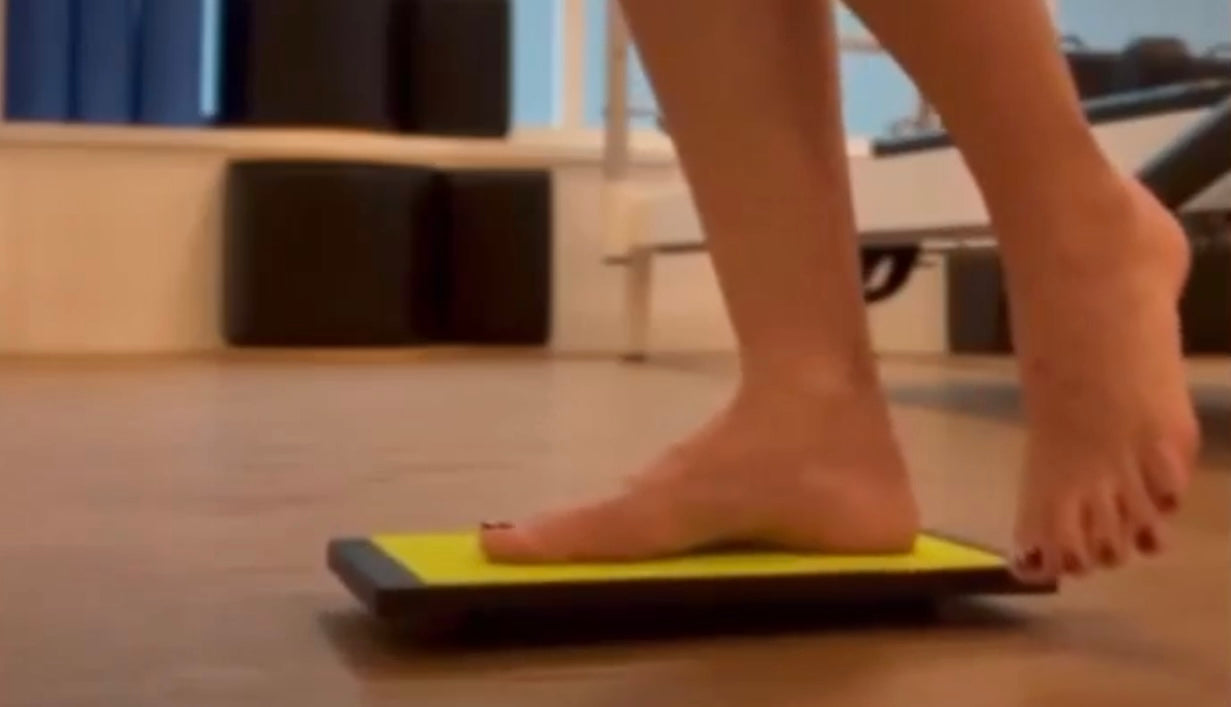The Future of Ankle Rehab Is Mechanoceptive

Ankle sprains are the most common lower extremity injury in athletic populations, representing up to 30% of all sports-related injuries.
These injuries can result in long term disability, high economic costs due to persistent symptoms and repeated ankle sprains; and can potentially end an athlete’s career.
Over the years, ankle rehabilitation has been pretty consistent with the standard physical therapy protocol involving "proprioceptive training".
Proprioceptive Training
Proprioceptive training involves exercises that challenge the capacity of the nervous system to detect shifts in center of pressure and joint position. Some of the most common proprioceptive training modalities include wobble boards, dyna discs and the Bosu; all of which are forms of instability training.
A recent meta-analysis examined the effects of unstable surface training on proprioception and balance in active adults with chronic ankle instability which demonstrated great inconsistency in results.
Due to this inconsistency, it was questioned if perhaps the answer to ankle rehab was not proprioceptive but rather mechanoceptive?
Mechanoceptive Training
Mechanoception is a type of exteroceptor that is found on the plantar foot and palmar hand. These nerves respond to mechanical deformation which when stimulated communicate with the somatosensory cortex to build foot and body awareness.
There are a few key stimuli that are involved in the mechanoceptive system.
Skin Stretch
Tactile stimulation such as skin stretch was first introduced into the athletic industry in the form of athletic taping. It is proposed that ankle taping, such as that with RockTape, increases the afferent input of skin mechanoceptors, stimulated by the traction of the tape on the skin.
When combining athletic tape with instability training it was found that there was a significant acceleration in rehabilitation in subjects with chronic ankle instability (CAI).
Clinically, this suggests patients could be discharged sooner and athletes could return to sport more promptly when taping was combined with wobble board training.
Vibration
Another form of mechanoceptive stimulation that can potentially have a powerful impact on ankle perception and stability is vibration.
Vibration, such as that created by the PowerPlate, translates to dynamic movement and the perception of ground reaction forces when our foot strike the ground.
A subsequent study found that 6 weeks of barefoot unstable surface training with sub-threshold electrical stimulation applied to the foot/ankle significantly improved single-leg stability when compared to unstable surface training alone.
Like skin stretch, combining vibration with traditional proprioceptive training resulted in faster recovery and return to sport for athletes.
Texture
The third and final mechanoceptive stimuli from our feet which can be integrated into combined ankle rehab program is texture.
The detection of texture or two-point discrimination, such as that created by Naboso products, is an SA1 Merkel Disc stimuli which has been shown to play an integral role in quiet stance and the control of medial lateral sway.
To date no research has been done demonstrating the combination of proprioceptive with texture stimulation, however when used alone texture suggests a promising option for ankle stability.
This was demonstrated in a 2012 study by McKeon which showed a reduction in medial lateral sway when using textured vs smooth insoles for those with chronic ankle instability.
Conclusion
At Naboso, we believe in the power of sensory stimulation for the optimization of movement and that the sensory stimulation should be multi-dimensional meaning texture, vibration, skin stretch, proprioceptive, visual and auditory.
The Naboso product line is our way to provide the textural stimulation part of this story which when combined with other input can only enhance or up-regulate body perception and awareness.
To learn more about the Naboso insoles, mats, flooring and release tools please visit www.naboso.com